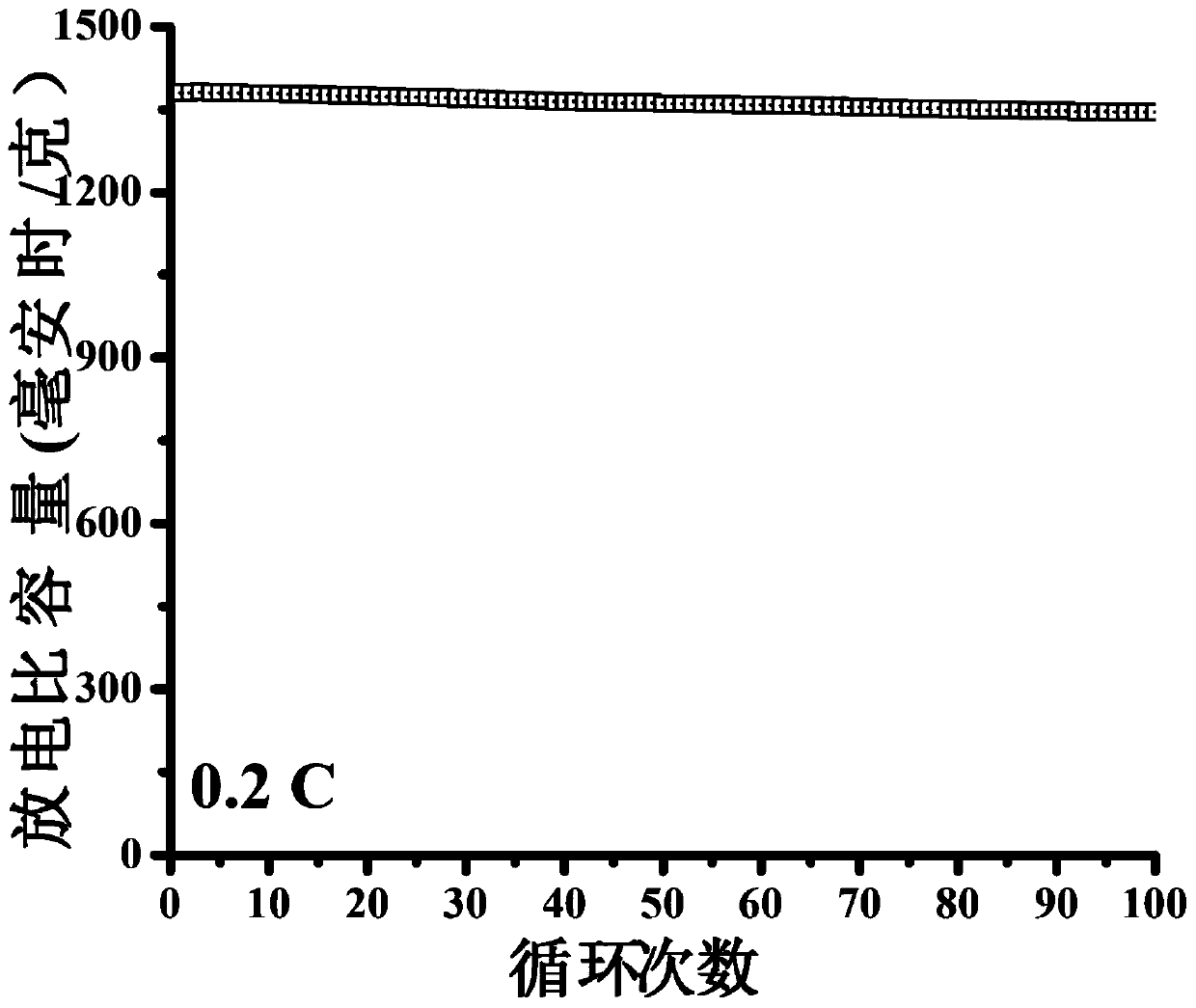Preparation method of functional interlayer of lithium-sulfur battery
A lithium-sulfur battery, a functional technology, applied in the field of material chemistry, which can solve problems such as capacity loss, cycle decay, and safety hazards
- Summary
- Abstract
- Description
- Claims
- Application Information
AI Technical Summary
Problems solved by technology
Method used
Image
Examples
Embodiment 1
[0021] The first step is to prepare MXene materials:
[0022] Immerse the ground MAX phase ceramic powder in HF solution (mass fraction 40%), raise the temperature to 60°C, stir magnetically for 18 hours, then centrifuge to obtain the product, wash it with deionized water until neutral, and place it in an oven at 70°C The MXene material was obtained after drying for 18 hours. The MAX phase ceramic can be Ti 3 AlC 2 、Ti 2 AlC, Cr 2 One or more of AlC. The obtained MXene material can be Ti 3 C 2 T x (T x is -OH or -F functional group), Ti 2 CT x (Tx is -OH or -F functional group), Cr 2 CT x (T x One or more of -OH or -F functional groups).
[0023] The second step is to prepare zinc oxide-coated MXene materials:
[0024] Take 0.8g of the MXene powder prepared in the first step and evenly spread it on the bottom of the porcelain boat, then configure a zinc acetate-ethanol solution with a concentration of 0.2mol / L, use the drop coating method to drip the powder unti...
Embodiment 2
[0028] The first step is to prepare MXene materials:
[0029] Immerse the ground MAX phase ceramic powder in HF solution (mass fraction is 50%), raise the temperature to 90°C, stir magnetically for 24 hours, then centrifuge to obtain the product, wash it with deionized water until neutral, and place it in an oven at 80°C The MXene material was obtained after drying for 24 hours. The MAX phase ceramic can be Ti 3 AlC 2 、Ti 2 AlC, Cr 2 One or more of AlC. The obtained MXene material can be Ti 3 C 2 T x (T x is -OH or -F functional group), Ti 2 CT x (Tx is -OH or -F functional group), Cr 2 CT x (T x One or more of -OH or -F functional groups).
[0030] The second step is to prepare zinc oxide-coated MXene materials:
[0031] Take 1g of the MXene powder prepared in the first step and evenly spread it on the bottom of the porcelain boat, then configure a zinc acetate-ethanol solution with a concentration of 0.5mol / L, use the drop coating method to drip the powder unt...
Embodiment 3
[0035] The first step is to prepare MXene materials:
[0036]Immerse the ground MAX phase ceramic powder in HF solution (mass fraction is 30%), raise the temperature to 50°C, stir magnetically for 12 hours, then centrifuge to obtain the product, wash it with deionized water until neutral, and place it in an oven at 60°C The MXene material was obtained after drying for 12 hours. The MAX phase ceramic can be Ti 3 AlC 2 、Ti 2 AlC, Cr 2 One or more of AlC. The obtained MXene material can be Ti 3 C 2 T x (T x is -OH or -F functional group), Ti 2 CT x (Tx is -OH or -F functional group), Cr 2 CT x (T x One or more of -OH or -F functional groups).
[0037] The second step is to prepare zinc oxide-coated MXene materials:
[0038] Take 0.5g of the MXene powder prepared in the first step and evenly spread it on the bottom of the porcelain boat, then configure a zinc acetate-ethanol solution with a concentration of 0.05mol / L, use the drop coating method to drip the powder u...
PUM
| Property | Measurement | Unit |
|---|---|---|
| quality score | aaaaa | aaaaa |
Abstract
Description
Claims
Application Information
 Login to View More
Login to View More - R&D
- Intellectual Property
- Life Sciences
- Materials
- Tech Scout
- Unparalleled Data Quality
- Higher Quality Content
- 60% Fewer Hallucinations
Browse by: Latest US Patents, China's latest patents, Technical Efficacy Thesaurus, Application Domain, Technology Topic, Popular Technical Reports.
© 2025 PatSnap. All rights reserved.Legal|Privacy policy|Modern Slavery Act Transparency Statement|Sitemap|About US| Contact US: help@patsnap.com

